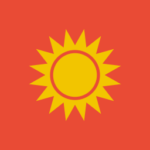Fees for registering Russia trademarks
Service Process
Trademark registration time
At present, the Russian Intellectual Property Office adopts the Nice Classification 11th edition of product and service descriptions and accepts applications for multiple categories in one form. The elements that can be registered as trademarks in Russia are: The current trademark regulations in Russia are mainly based on Part IV of the Civil Code of the Russian Federation, promulgated on December 26, 2006, and revised on December 30, 2008. The Federal Intellectual Property Office under the Ministry of Economic Development is responsible for managing trademark affairs, and the official language is Russian. Trademark exclusive rights need to be obtained through registration. Trademark registration is not mandatory, but in order to protect the trademark or renew it, it must be registered in accordance with the law. Russian trademark registration adopts the principle of "application first", but in some cases, trademark rights can also be claimed based on "prior use".
Russia is a contracting party to international intellectual property treaties such as the TRIPS Agreement, the Trademark Law Treaty, the Paris Convention, the Nice Agreement, the WIPO Convention, the Singapore Treaty, and the Nairobi Treaty. As a member of the Madrid Agreement and the Madrid Protocol, trademark protection can be handled through both "single country registration" and "Madrid international registration" methods.
Trademark Registration Process
At present, the Russian Intellectual Property Office adopts the Nice Classification 11th edition of product and service descriptions and accepts applications for multiple categories in one form. The elements that can be registered as trademarks in Russia include: text, name, graphics, three-dimensional identification, color combination, slogan, sound, smell, etc.
If the applicant does not reside in Russia, they must entrust a specialized agent in their home country to handle the matter. The basic materials required for trademark application are:
1. Trademark design;
2. Specific product items;
3. Name and address of the applicant;
4. Power of attorney;
5.If priority is declared, priority proof documents and corresponding Russian language translations must be provided.
The main process of applying for registration of a Russian trademark is: application acceptance examination approval issuance announcement (registration announcement). After the application is submitted, the official first conducts a formal review, mainly examining whether the application requirements and classification information comply with regulations. Generally, it takes about 2 weeks to complete the acceptance. After acceptance, substantive examination of the trademark will be conducted, including examination of the distinctiveness of the trademark, whether it violates the prohibition and prohibition clauses, and whether it conflicts with the prior trademark. Upon approval of the examination, registration will be granted and a registration certificate will be issued; If the review fails, a rejection notice will be issued and the applicant will be required to respond within the time limit specified in the rejection notice. In a smooth situation, trademark registration in Russia takes about 1 and a half years.
There is currently no objection procedure in Russia, and anyone who believes that a registered trademark has infringed their rights can file an invalidation or revocation application for the registered trademark to protect their trademark rights. Invalid or revoked applications based on relative reasons must be filed within 5 years after publication, while invalid or revoked applications based on absolute reasons can be filed at any time after trademark registration.
Trademark registration materials
The Russian trademark is valid for 10 years after registration, starting from the date of application; Renewal can be processed within 12 months before the expiration date, with a grace period of 6 months; The renewal is valid for 10 years.
The invalidation or revocation application after trademark registration can generally be filed based on the following reasons:
1. Conflict with prior trademarks, such as owning prior registered trademarks and using unregistered trademarks;
2. Malicious registration;
3. Well known trademark;
4. Conflict with other prior rights, such as trade name rights, design rights, copyrights, personal names, etc;
5. The trademark lacks distinctiveness;
6. Trademarks are descriptive;
7. Common names or vocabulary within the industry;
8. Trademarks have adverse effects.
Start Your Trademark Business
Start Registration

do not understand? Contact us

do not understand? Contact us

do not understand? Contact us

do not understand? Contact us


 Russia
Russia